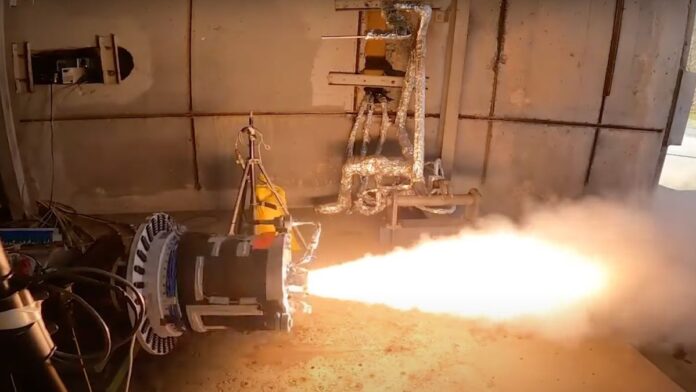NASA has test-fired rocket motors as part of the development of an ascent vehicle designed to launch samples off the Red Planet.
NASA and its contractors are developing the Mars Ascent Vehicle (MAV) for the NASA-European Space Agency Mars Sample Return mission campaign. The MAV is designed to get samples collected on Mars into orbit above the Red Planet, where they’ll be grabbed by a spacecraft that will haul them to Earth.
The MAV, which is planned to be the first rocket ever to launch from another planet, is a two-stage vehicle. Two development solid rocket motors, SRM1 and SMR2, for each stage have been fired in recent months to test their performance before building the real motors destined for Mars.
Related: What’s ahead in returning samples from Mars?
SRM2 was tested at Northrop Grumman’s facility in Elkton, Maryland, on March 29. Footage from a recently released video shows the engine firing up while spinning at 200 RPM. The second stage will use spin stabilization to keep the launcher on target toward its correct orbit.
SRM1 was tested on April 7 at Edwards Air Force Base in California. Both trials were conducted to test performance of the motors at minus 4 degrees Fahrenheit (minus 20 degrees Celsius) to simulate conditions on Mars.
The SRM1 test demonstrated a state-of-the-art trapped ball nozzle featuring a supersonic split line, which will allow the motor to alter the direction of its thrust and control its flight. This novel design was employed because normal gimballing solid rocket motor nozzles can’t handle the extreme cold present on Mars, mission team members said.
“This test demonstrates our nation has the capacity to develop a launch vehicle that can successfully be lightweight enough to get to Mars and robust enough to put a set of samples into orbit to bring back to Earth,” MAV Propulsion Manager Benjamin Davis, of NASA’s Marshall Space Flight Center in Alabama, said in a statement.
“The hardware is telling us that our technology is ready to proceed with development.”
MAV will land on Mars with the Sample Retrieval Lander (SRL) near or in Jezero Crater. NASA’s Perseverance rover is already collecting Mars samples there to be gathered up and sent back to Earth.
The sample return program is, however, facing a level of in jeopardy after the U.S. Senate raised questions about the mission’s expanding budget.
The Mars Sample Return Program is being managed by NASA’s Jet Propulsion Laboratory in Southern California. JPL released the footage on July 31.

